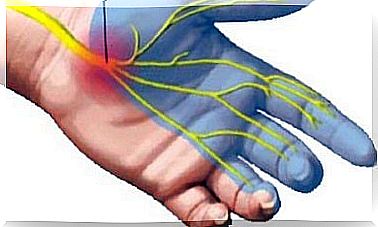What Is Endodontics? Everything You Need To Know!
Endodontics are mainly used for the treatment of caries at an advanced stage. Find out more about this process here!

Have you ever wondered what endodontics is? This dental treatment is used when the tooth decay is so advanced that it cannot be treated with a filling because it is too close to the pulp or tooth nerve.
If the tooth decay is very deep, it causes necrosis of the tooth or inflammation of the nerve, which is known as pulpitis. Other reasons for using endodontics are, for example, tooth injuries, fractures, tooth wear or erosion or diseases such as bruxism.
The tooth pulp is the nerve of the tooth. It is located inside the tooth and enables vascularization and innervation. When the pulp is damaged for any reason, pain is occasional or persistent.
Initially there are discomfort when biting and sensitivity to cold or heat. In this case, it is called reversible pulpitis. However, if the pain is steady, prolonged, or worsening at night, it is usually irreversible pulpitis.
Options before endodontics
Before doing endodontics, one should always try to save the tooth with less aggressive methods:
- Pulp protection: This is a treatment that is carried out with a temporary filling, which makes it possible to save the tooth conservatively and to eliminate the still reversible pulp damage.
- Pulp coating: With this method, the pulp exposed under the filling due to the caries treatment is isolated by applying a medical layer.
- Pulpotomy: This treatment involves removing part of the upper pulp and then covering the exposed pulp with medicinal substances.
How is endodontics performed?

Endodontics involve removing the entire nerve from the affected tooth. Under local anesthesia, the dentist removes the nerve tissue of the root canals with the help of tooth files.
The tooth files are either manual, in which the rotary movements are carried out by hand, or automatically, connected to an odontological motor that drives the files at low speeds.
The following steps are carried out:
- Local anesthesia of the tooth to be treated
- Opening the tooth to the pulp
- Removal of the nerve from the canals and disinfection
- Filling the channels with plastic
- X-ray to check that the treatment was carried out correctly
- Reconstruction of the tooth
Do you use endodontics in children?
In children, always try to use the pulpotomy before performing an endodontic procedure. If this is not possible, a pulpectomy is performed, which is similar to endodontics, but is performed on milk teeth.
Pulpectomy is also the complete removal of the pulp, followed by disinfection, instrumentation and filling of the root canal.
The difference is that in the deciduous teeth, the entire pulp is not removed from the canal, but about 4 mm are left at the end of the canal.
This avoids possible damage to the germ of the permanent tooth that forms under the milk tooth.
Disadvantages of this procedure
As with all types of medical treatment, there are side effects or consequences in the tooth. This includes, for example:
- Fragility and increased risk of fractures.
- Some change in the shade and translucency of the tooth.
- Occasionally a small radiolucent scar that resembles permanent inflammation at the tip of the root.
What can happen after endodontics?

After the endodontics, the pain should go away because the tooth’s nerve has been removed. But it often happens that you continue to have symptoms for a few days until the wound heals.
In some cases, however, endodontics is not the final treatment. This is because problems can arise (for example an infection) that make reendodontics necessary.
In reendodontics, the filling of the canals is removed, cleaned again, disinfected and then refilled. This way you avoid pulling the tooth.
In summary, it can be said that this treatment aims to preserve the tooth, even if the tooth is badly damaged.









